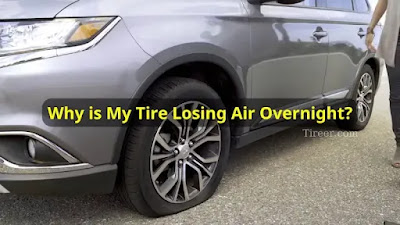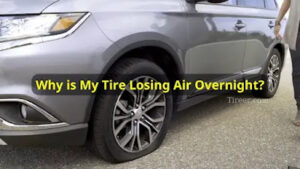Maintaining proper tire pressure is crucial for safe and efficient driving. When tire pressure is too low or too high, it can lead to a variety of issues such as decreased fuel efficiency, poor handling, and increased risk of accidents. Unfortunately, tire pressure loss is a common problem that many drivers face.
Common Causes of Tire Pressure Loss: A Comprehensive Overview
There are several common causes of tire pressure loss that drivers should be aware of. One of the most common causes is natural air leakage. Over time, tires naturally lose air due to the permeability of the rubber. This can result in gradual pressure loss over time.
Temperature changes can also cause fluctuations in tire pressure. As temperatures rise, the air inside the tire expands, leading to an increase in pressure. Conversely, as temperatures drop, the air contracts, causing a decrease in pressure. It is important for drivers to regularly check and adjust their tire pressure to account for these temperature changes.
Damaged tires can also lead to pressure loss. Tires can become damaged due to road hazards such as potholes or sharp objects. When a tire is damaged, it may develop a slow leak, causing gradual pressure loss over time.
Valve stem issues are another common cause of tire pressure loss. The valve stem is responsible for allowing air to enter and exit the tire. If the valve stem becomes damaged or worn out, it can result in air leakage and pressure loss.
Leaky rims can also cause tire pressure loss. Rims can develop leaks due to corrosion or damage, allowing air to escape from the tire. This can lead to gradual pressure loss over time.
Punctured tires are another common cause of pressure loss. When a tire is punctured by a nail or other sharp object, it can result in a sudden loss of pressure. In some cases, the puncture may be small and slow, causing gradual pressure loss over time.
Improper tire maintenance can also lead to pressure loss. Failing to regularly check and adjust tire pressure, as well as neglecting other maintenance tasks such as tire rotations and alignments, can result in decreased tire performance and increased risk of pressure loss.
The Role of Temperature in Tire Pressure Fluctuations
Temperature plays a significant role in tire pressure fluctuations. As mentioned earlier, as temperatures rise, the air inside the tire expands, leading to an increase in pressure. Conversely, as temperatures drop, the air contracts, causing a decrease in pressure.
It is important for drivers to be aware of these temperature-related fluctuations and adjust their tire pressure accordingly. In hot weather, it is recommended to slightly lower the tire pressure to account for the expansion of air. Conversely, in cold weather, it is recommended to slightly increase the tire pressure to compensate for the contraction of air.
To adjust tire pressure in different temperatures, drivers should consult their vehicle’s owner’s manual or the tire manufacturer’s recommendations. It is also important to use a reliable tire pressure gauge to accurately measure the pressure and make adjustments as needed.
Damaged Tires: Signs and Symptoms to Look Out For
Damaged tires can lead to pressure loss and should be addressed promptly. There are several signs and symptoms that drivers should look out for to identify damaged tires.
One of the most obvious signs of a damaged tire is visible damage. This can include cuts, tears, or bulges on the sidewall or tread of the tire. If a tire is visibly damaged, it should be inspected by a professional and replaced if necessary.
Uneven wear on the tire tread is another sign of potential damage. If one area of the tread is significantly more worn than the rest, it could indicate an alignment issue or other underlying problem that needs to be addressed.
Bulges or bubbles on the sidewall of the tire are also signs of damage. These bulges or bubbles can indicate internal damage to the tire, such as a broken belt or separation of the layers. If a tire has a bulge or bubble, it should be replaced immediately as it poses a significant safety risk.
Valve Stem Issues: How to Identify and Fix Them
Valve stem issues can lead to air leakage and pressure loss. There are several common valve stem issues that drivers should be aware of.
One common issue is a damaged or worn out valve stem. Over time, the valve stem can become cracked or worn, leading to air leakage. If the valve stem is damaged, it should be replaced by a professional.
Another common issue is a faulty valve core. The valve core is responsible for allowing air to enter and exit the tire. If the valve core is faulty, it can result in air leakage and pressure loss. In this case, the valve core should be replaced.
To check for valve stem issues, drivers can visually inspect the valve stem for any signs of damage or wear. They can also use a soapy water solution to check for air bubbles around the valve stem, indicating a leak.
Fixing valve stem issues should be done by a professional. They will have the necessary tools and expertise to properly replace the valve stem or valve core.
Leaky Rims: Causes and Solutions
Leaky rims can cause air leakage and pressure loss. There are several causes of leaky rims that drivers should be aware of.
One common cause is corrosion. Over time, rims can develop corrosion due to exposure to moisture and road salt. This corrosion can create small holes or cracks in the rim, allowing air to escape from the tire.
Another cause of leaky rims is damage. Rims can become damaged due to hitting potholes or curbs, resulting in cracks or bends that can lead to air leakage.
To identify leaky rims, drivers can visually inspect the rims for any signs of corrosion, cracks, or bends. They can also use a soapy water solution to check for air bubbles around the rim, indicating a leak.
Solutions for leaky rims depend on the severity of the damage. In some cases, minor corrosion can be repaired by sanding down the affected area and applying a sealant. However, more severe damage may require the rim to be replaced.
Punctured Tires: How to Repair or Replace Them
Punctured tires can lead to sudden pressure loss and should be addressed promptly. There are several steps to take when dealing with a punctured tire.
The first step is to identify the puncture. This can be done by visually inspecting the tire for any nails, screws, or other sharp objects that may be embedded in the tread. In some cases, the puncture may be small and difficult to see, requiring the use of a soapy water solution to check for air bubbles.
Once the puncture is identified, it can be repaired if it meets certain criteria. Small punctures in the tread area can often be repaired using a patch or plug. However, if the puncture is too large or located in the sidewall of the tire, it cannot be repaired and the tire will need to be replaced.
When repairing a punctured tire, it is important to follow proper repair procedures and use high-quality repair materials. It is recommended to have the tire repaired by a professional to ensure that the repair is done correctly and safely.
Improper Tire Maintenance: Tips for Keeping Your Tires in Good Condition
Proper tire maintenance is essential for preventing pressure loss and ensuring safe driving. There are several tips that drivers should follow to maintain their tires in good condition.
One of the most important aspects of tire maintenance is regularly checking and adjusting tire pressure. This should be done at least once a month or before long trips. Drivers should consult their vehicle’s owner’s manual or the tire manufacturer’s recommendations for the proper tire pressure.
In addition to checking tire pressure, drivers should also regularly inspect their tires for any signs of damage or wear. This includes visually inspecting the tread for uneven wear, bulges, or cuts. It is also important to regularly rotate the tires to ensure even wear and prolong their lifespan.
Proper alignment and balancing are also important for tire maintenance. Misaligned or unbalanced tires can lead to uneven wear and decreased performance. Drivers should have their tires aligned and balanced regularly as recommended by their vehicle’s manufacturer.
Regular tire rotations and alignments can also help prevent pressure loss by ensuring that the tires wear evenly and maintain proper contact with the road surface.
The Importance of Regular Tire Pressure Checks: How Often Should You Do It?
Regular tire pressure checks are crucial for preventing pressure loss and ensuring safe driving. It is recommended to check tire pressure at least once a month or before long trips.
Regular tire pressure checks help to ensure that the tires are properly inflated, which is essential for safe and efficient driving. Underinflated tires can lead to decreased fuel efficiency, poor handling, and increased risk of accidents. Overinflated tires can also negatively impact handling and increase the risk of a blowout.
To check tire pressure, drivers should use a reliable tire pressure gauge. They should consult their vehicle’s owner’s manual or the tire manufacturer’s recommendations for the proper tire pressure. It is important to check the pressure when the tires are cold, as driving can heat up the tires and cause the pressure to increase.
Conclusion: Taking Action to Prevent Tire Pressure Loss and Ensure Safe Driving
In conclusion, maintaining proper tire pressure is crucial for safe and efficient driving. There are several common causes of tire pressure loss, including natural air leakage, temperature changes, damaged tires, valve stem issues, leaky rims, punctured tires, and improper tire maintenance.
To prevent tire pressure loss, drivers should regularly check and adjust their tire pressure, especially in different temperatures. They should also be aware of the signs and symptoms of damaged tires, valve stem issues, leaky rims, and punctured tires, and take appropriate action to address these issues.
Proper tire maintenance is essential for preventing pressure loss and ensuring safe driving. This includes regularly checking tire pressure, inspecting tires for damage or wear, rotating and aligning tires, and following proper repair procedures for punctured tires.
By taking these actions and regularly checking tire pressure, drivers can ensure that their tires are properly inflated and in good condition, leading to safer and more efficient driving.

